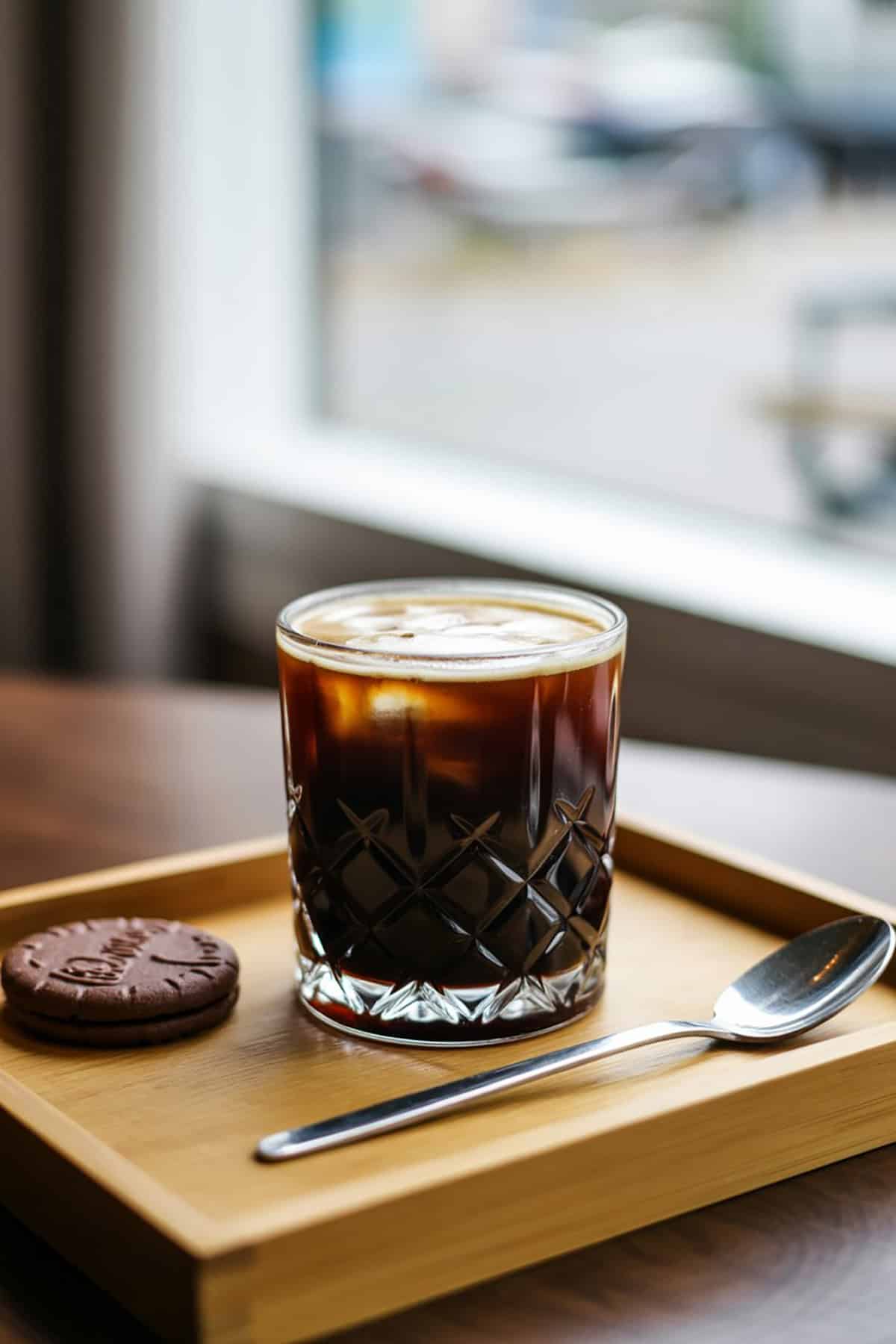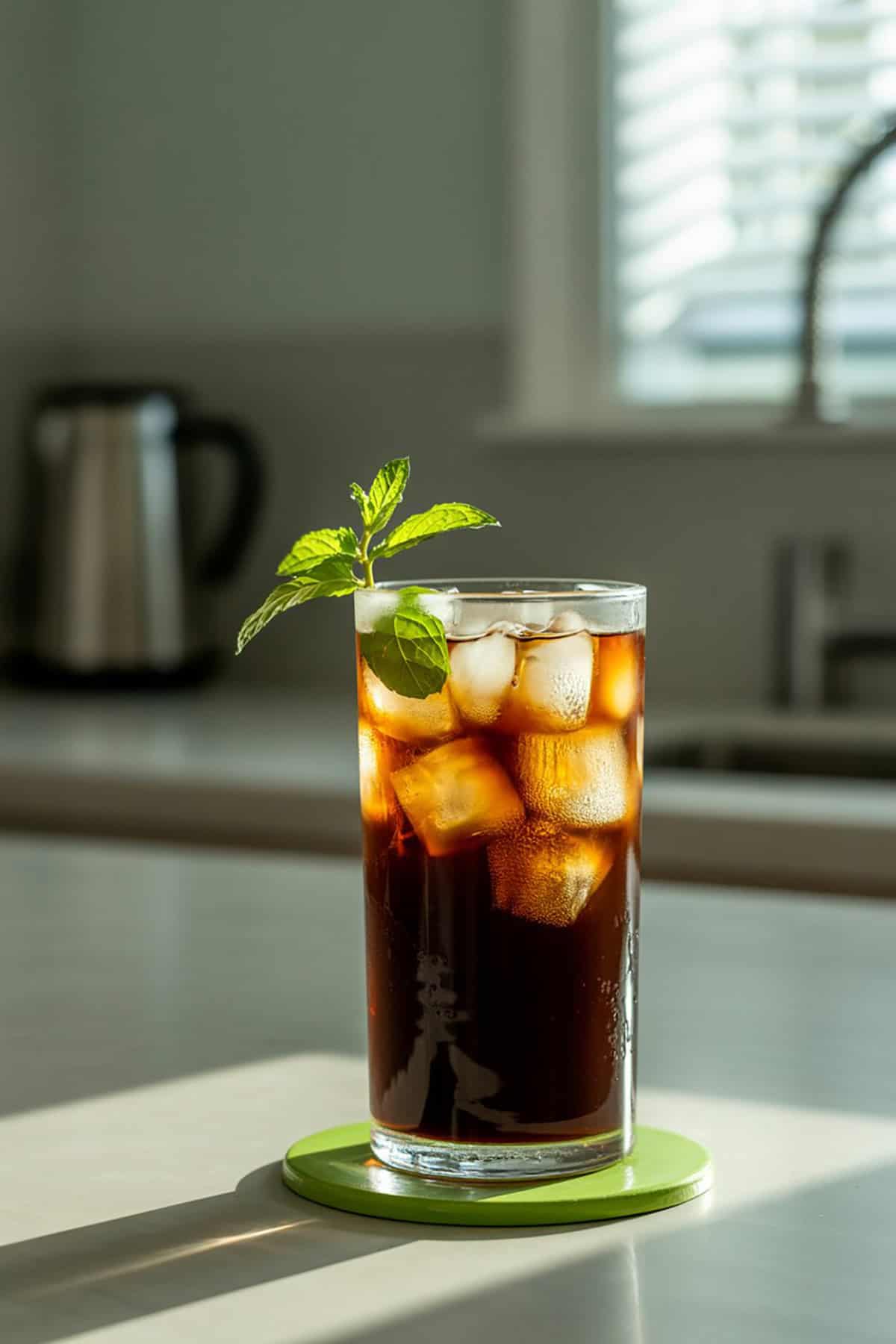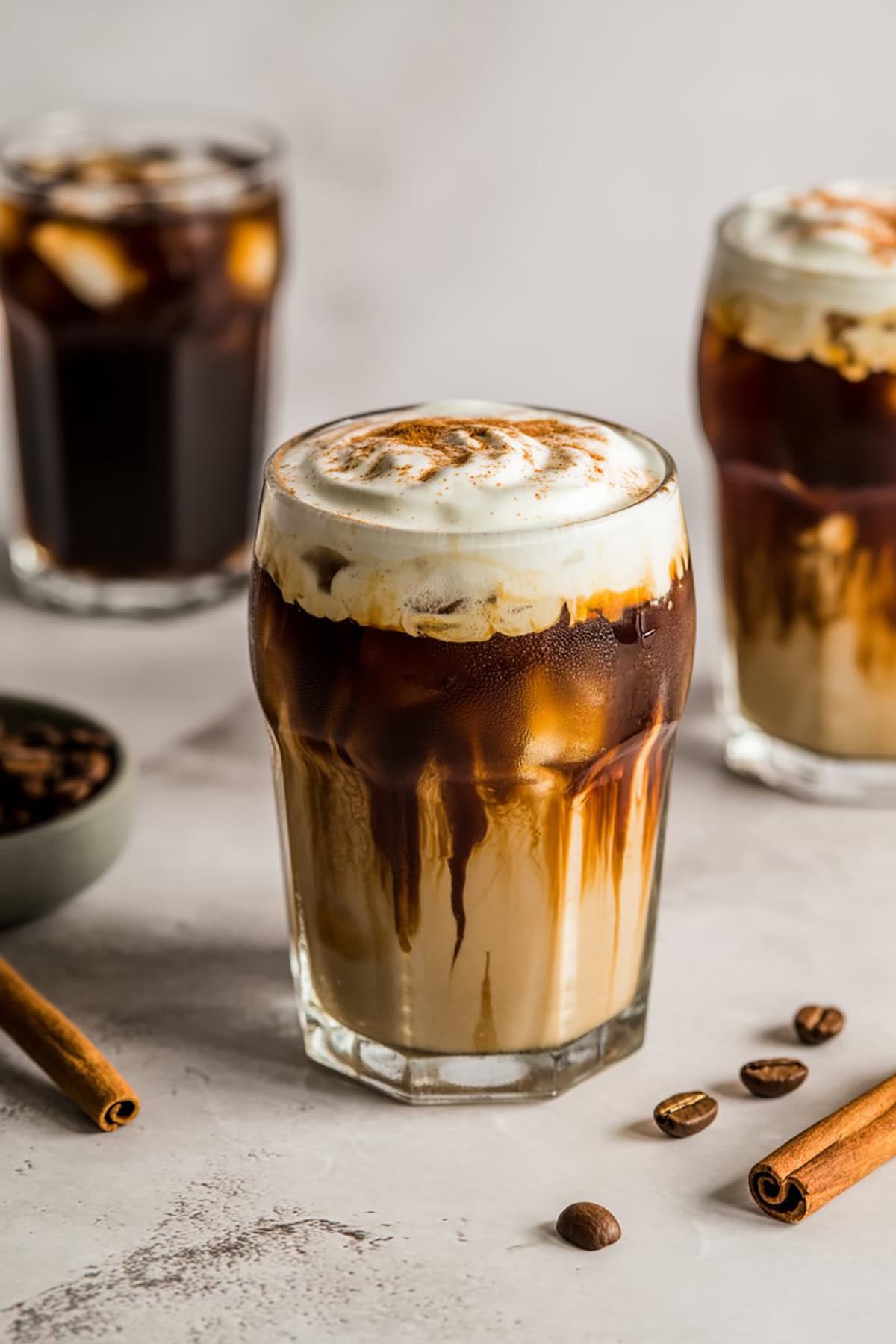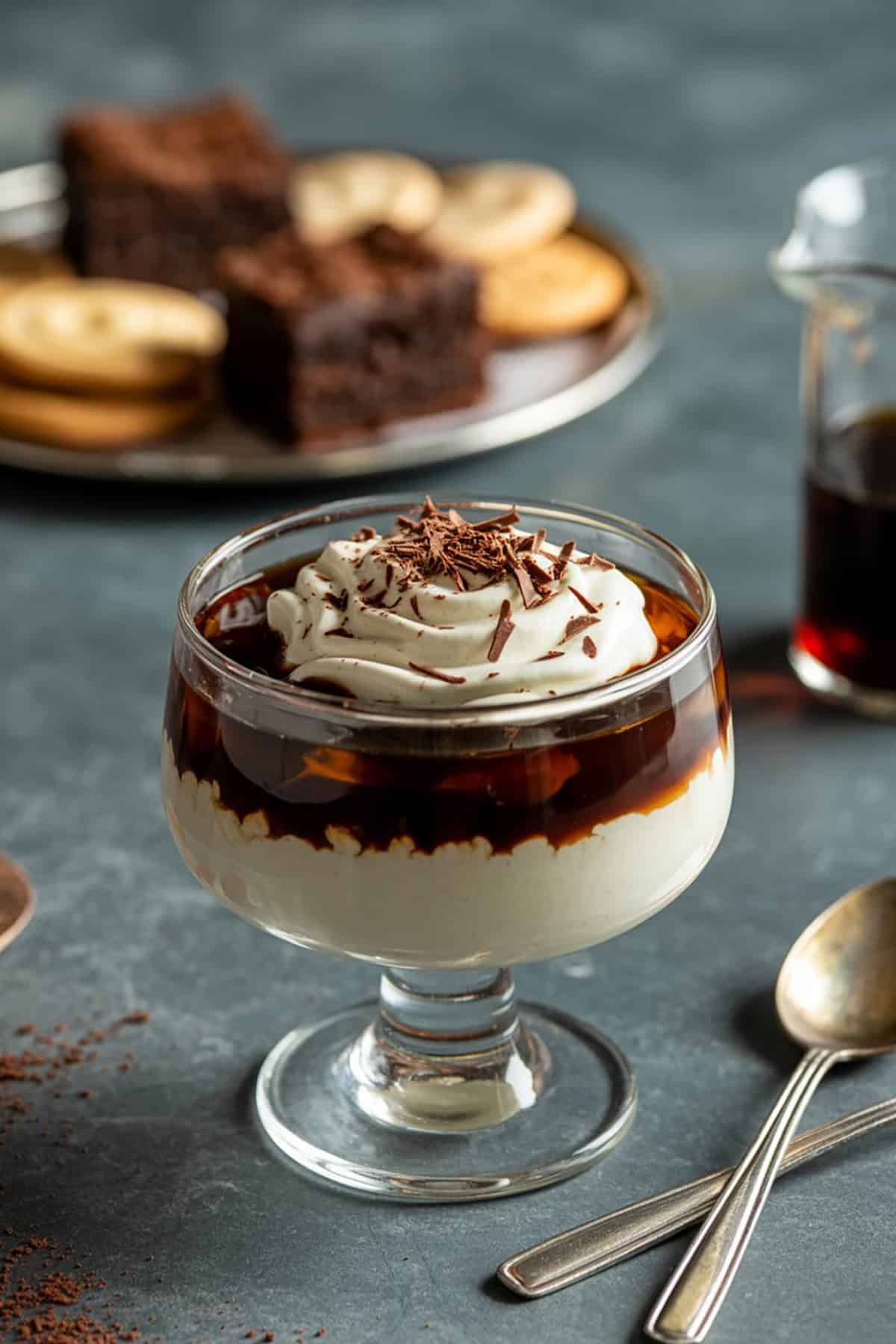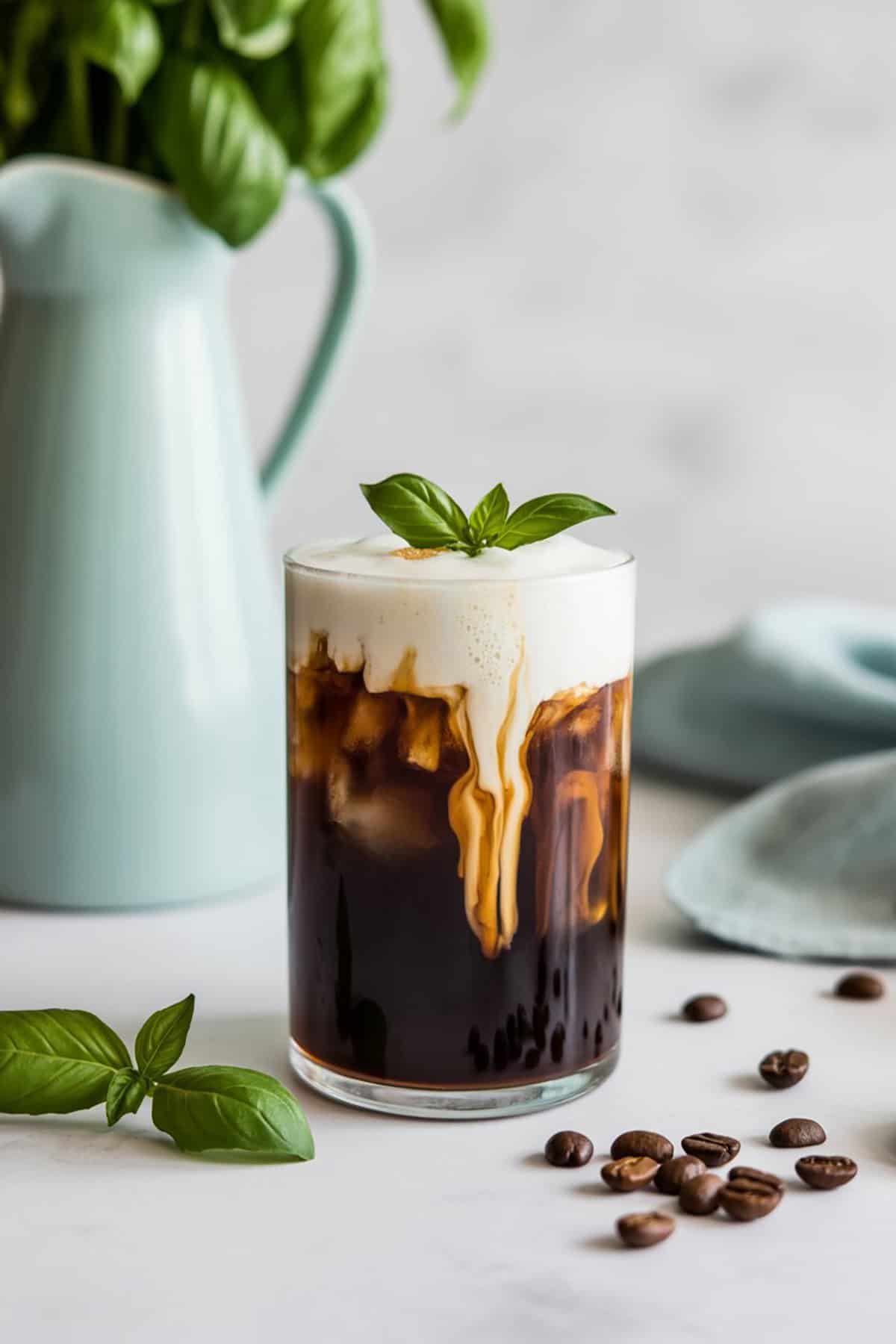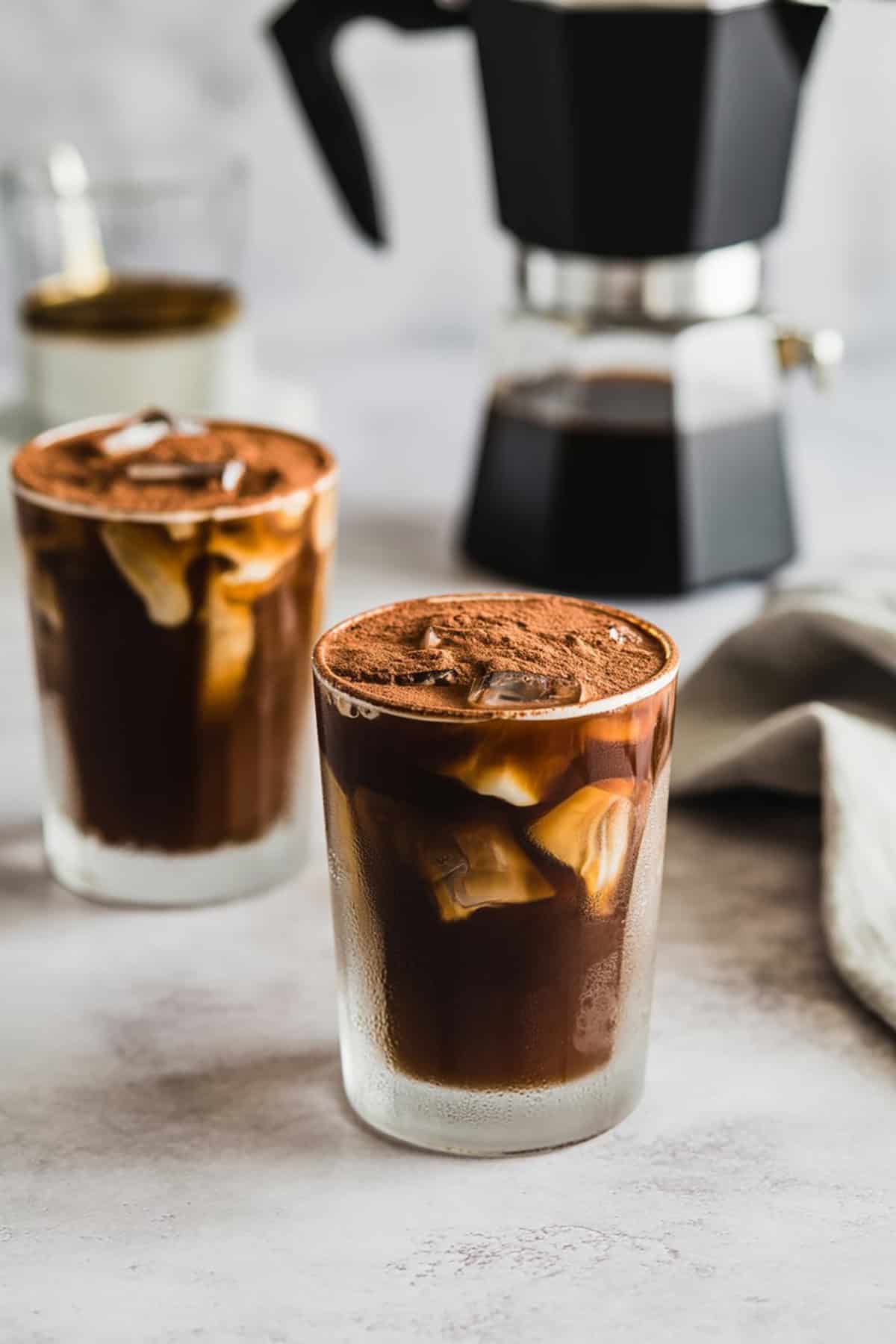Curious about what makes a flat white special? This coffee drink is loved for its rich, creamy texture and balanced flavors. A flat white consists of a double shot of espresso and steamed milk, topped with a thin layer of microfoam.
The origins of the flat white trace back to Australia and New Zealand in the 1980s. It stands apart from a latte by its milk-to-coffee ratio and texture. It’s perfect for those who want a strong coffee taste without the froth of a cappuccino.
You can make a flat white at home with just espresso, whole milk, and a few specific techniques. This guide will walk you through the steps to achieve that smooth, velvety texture. Dive in to discover a new way to enjoy coffee.
Equipment
To prepare a flat white, start with an espresso machine. This is vital for brewing high-quality espresso shots. Use a milk frother or the steam wand on your espresso machine to achieve the right texture. You’ll need a small metal jug for steaming milk. A thermometer can help ensure the milk is heated to the right temperature. A tamper is necessary to pack the coffee grounds in the portafilter. Consider using a scale to measure coffee and milk precisely.
Ingredients
Crafting a flat white requires just a few key components:
- Espresso Roast Coffee: 18-20 grams for a double shot
- Whole Milk: 5-6 ounces for microfoam
- Water: For brewing espresso
Choose high-quality coffee beans, as this heavily influences the flavor. Whole milk is preferred to create a silky microfoam texture, but alternatives can be used if needed. The water quality can also impact the final taste, so ensure it’s filtered.
Instructions
Follow a structured process to create your flat white:
- Brew Espresso: Use 18-20 grams of ground coffee for a double shot.
- Steam Milk: Heat milk using the steam wand to around 150°F for microfoam.
- Combine: Pour the steamed milk over the espresso, keeping the milk’s microfoam texture intact.
Ensure the milk is smooth and creamy, with a glossy finish. This contributes to the drink’s signature texture. Pour the milk gently to create a velvety layer.
Tasting Notes
The flat white is known for its strong coffee flavor. Its espresso-forward nature makes it a favorite among espresso lovers. The milk provides a smooth texture without overwhelming the coffee’s taste. Look for a balanced blend of rich espresso with the creaminess of milk. Each sip should highlight the coffee’s notes, whether chocolatey or nutty, depending on the beans used.
Similar Drinks
Similar coffee beverages include the latte and cappuccino. A latte contains more milk and less coffee, resulting in a creamier taste. The cappuccino has more foam and a stronger espresso flavor with less milk than a latte. Each has unique preparation methods and proportions, offering varying coffee-to-milk ratios and textures. The flat white sits between these drinks, combining a strong espresso shot with a smooth milk texture.
History
The flat white originated in Australia and New Zealand. Its precise origin remains disputed. Coffee culture in both countries influenced its rise. It gained popularity in the 1980s and entered the global scene later. The flat white became a global trend as coffee drinkers sought stronger flavors and creamy textures. It’s now widely available in coffee shops, reflecting its lasting appeal.
Quick Pro Tips
- Temperature: Avoid overheating the milk to preserve its sweetness.
- Consistency: Achieve a uniform microfoam for better texture.
- Variation: Experiment with different beans to discover new flavors.
Pay attention to milk frothing techniques. Practice makes perfect with pouring to maintain the signature velvety finish.
When to Serve
Serve flat whites in the morning or early afternoon. It’s ideal for coffee lovers who want a strong, smooth beverage. Not too heavy, making it suitable as an accompaniment for breakfast or a mid-day boost. Enjoy it on special occasions or as a treat during relaxed weekends with friends.

